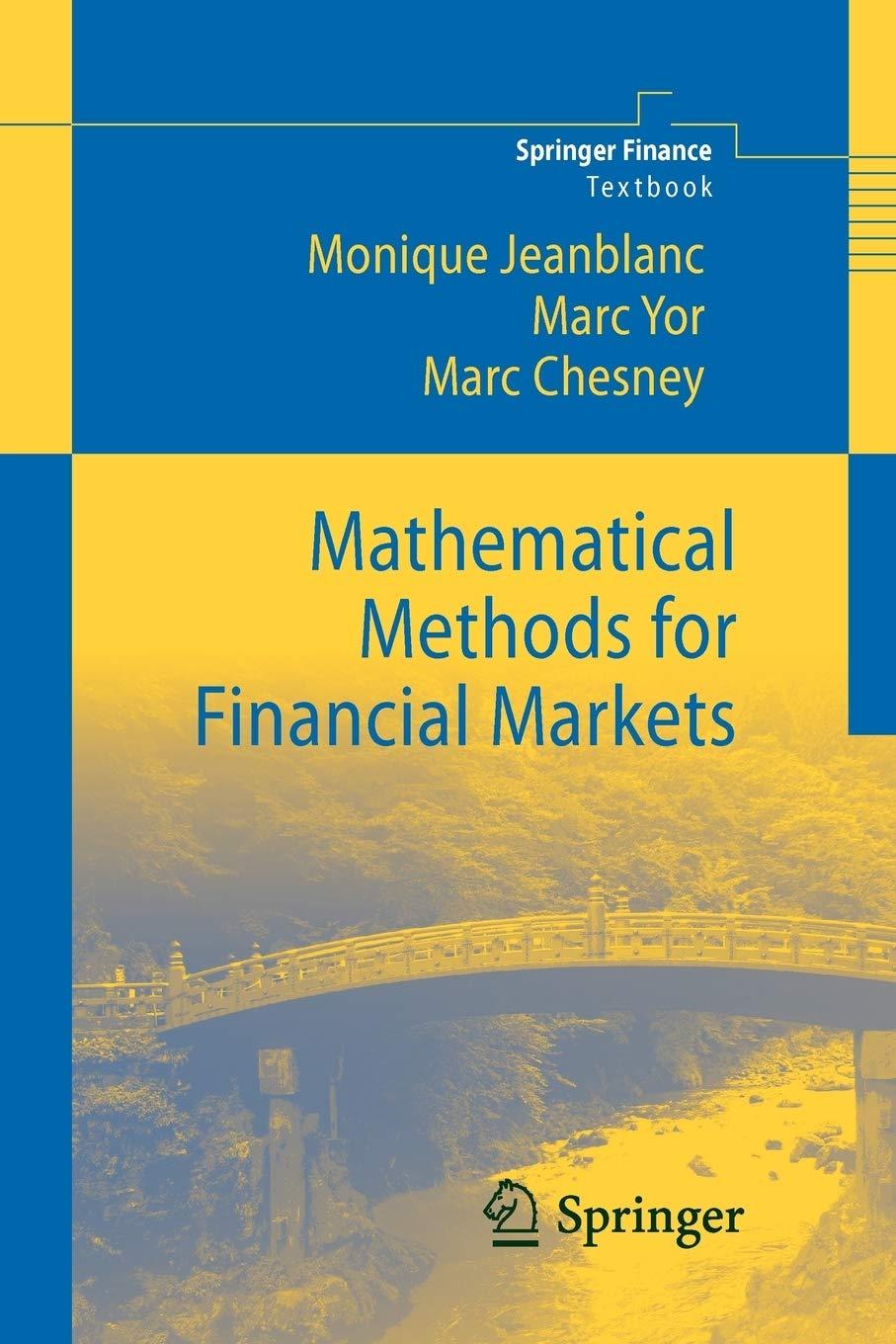Let (left(mu, sigma, a_{i}, i=1,2 ight)) be given constants with (a_{i}>0) and (X_{t}=mu t+sigma B_{t}+a_{1} N_{t}^{(1)}-a_{2} N_{t}^{(2)})
Question:
Let \(\left(\mu, \sigma, a_{i}, i=1,2\right)\) be given constants with \(a_{i}>0\) and \(X_{t}=\mu t+\sigma B_{t}+a_{1} N_{t}^{(1)}-a_{2} N_{t}^{(2)}\) where \(B\) is a BM and \(\left(N^{(i)}, i=1,2\right)\) are two independent Poisson processes with respective intensities \(\lambda_{i}\). Let \(\Psi\) be defined by \(\mathbb{E}\left(e^{\theta X_{t}}\right)=e^{t \Psi(\theta)}\) and \(\left.\mathbb{Q}\right|_{\mathcal{F}_{t}}=\left.e^{\theta X_{t}-t \Psi(\theta)} \mathbb{P}\right|_{\mathcal{F}_{t}}\) be a change of probability. Let \(r\) be a given number.
Characterize \(\theta\) such that \(\left(e^{-r t+\theta X_{t}}, t \geq 0\right)\) is a \(\mathbb{Q}\)-martingale.
Step by Step Answer:

Mathematical Methods For Financial Markets
ISBN: 9781447125242
1st Edition
Authors: Monique Jeanblanc, Marc Yor, Marc Chesney





